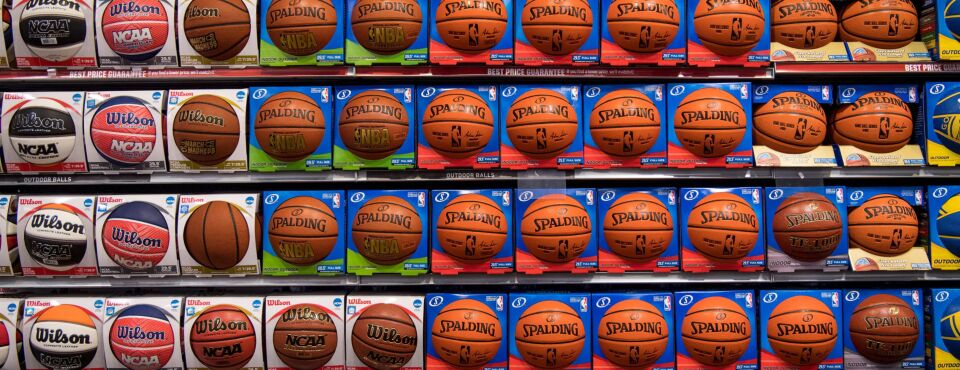NIL
NCAA’s Legal Risks Endure Despite $2.8 Billion NIL Settlement
A federal judge’s final approval of the NCAA’s $2.8 billion settlement with student-athletes won’t quell all the antitrust threats for the sports organization as it seeks to provide stability in college sports. Judge Claudia Wilken of the US District Court for the District of Northern California in a 76-page order June 6 found the settlement […]

A federal judge’s final approval of the NCAA’s $2.8 billion settlement with student-athletes won’t quell all the antitrust threats for the sports organization as it seeks to provide stability in college sports.
Judge Claudia Wilken of the US District Court for the District of Northern California in a 76-page order June 6 found the settlement fair to class members and overruled numerous objections, including over a controversial spending limit cap, viewing the deal as a compromise between the parties.
The deal removes a huge headache for the NCAA, in that the claims of a huge consolidated class action fall by the wayside, and, for the first time, a system will exist in which schools can pay athletes directly. But the settlement won’t insulate the NCAA from antitrust challenges alleging anticompetitive practices, said Cal Stein, litigation partner with Troutman Pepper Locke.
Objectors are also likely to appeal the settlement, while future athletes could bring separate suits challenging pay limits and roster limit provisions. Opt-out plaintiffs who declined to participate in the settlement could pursue individual claims. Other cases with claims against the NCAA outside the settlement remain in play.
Attorney Steven Molo, who represents athletes opposed to the deal, said in a statement to Bloomberg Law that he is reviewing the order and “considering our options.”
“I don’t think it’s a silver bullet,” Stein said of the settlement. “The NCAA saw the writing on the wall. They needed to get out of the way of this freight train, and they managed to do it on terms that they can live with. But it’s very clear to me that there is going to be continued litigation.”
Push for Legislation
Another sign that the NCAA expects legal trouble: NCAA President Charlie Baker made another appeal to Congress for college sports legislation even as he praised the settlement approval.
“You wouldn’t be doing that if you didn’t have fear of this new system being subject to challenges and legal difficulties,” Stein said.
Rep. Lisa McClain (Mich.), the fourth-ranking member of GOP House leadership, and Rep. Janelle Bynum (D-Ore.) introduced a bill (H.R. 3847) Monday that would standardize athletes’ NIL pay.
The House Energy and Commerce Committee has a June 12 legislative hearing on separate draft legislation by Rep. Gus Bilirakis (R-Fla.) that is considered largely in line with the NCAA’s wishes. The draft includes a provision that would address antitrust liability in college sports.
Follow-on Litigation
The judge’s approval doesn’t function as an endorsement of the legality of the NCAA’s rules and her order “invites follow-on litigation,” said Christine Bartholomew, a law professor at University at Buffalo focused on antitrust issues.
“The judge just recognizes that this doesn’t provide complete relief,” Bartholomew said. “This opinion, in my mind, is written with the realization that there is a very high likelihood of appeal.”
Expect to see appeals from objectors in the next month, with future lawsuits thereafter, said Michael Carrier, a professor at Rutgers Law School who writes about antitrust and intellectual property.
An appeal could be an “uphill climb” for plaintiffs covered by the deal, but that doesn’t mean they won’t be successful, he said. “There’s a chance that an appellate court could overturn it.”
Smaller colleges that feel disadvantaged by the NCAA’s settlement’s revenue-sharing model also may pursue litigation, said William Lavery, a partner in Clifford Chance’s global antitrust litigation practice.
Institutions can distribute up to 22% of the average revenue generated by schools in conferences including the ACC and Big Ten. The cap is estimated to be roughly $20.5 million per school.
“It allows schools to prioritize the revenue-sharing model to revenue-generating sports disproportionately; that’s obviously going to entrench inequality,” Lavery said. “These elite programs are going to continue to attract more talent. It’s going to make it effectively impossible for smaller schools to compete, at least in the big sports.”
Plaintiffs are also represented by Winston & Strawn LLP and Hagens Berman Sobol Shapiro LLP. The NCAA is represented by Wilkinson Stekloff LLP.
The case is In re College Athlete NIL Litig., N.D. Cal., No. 4:20-cv-03919, 6/6/25.